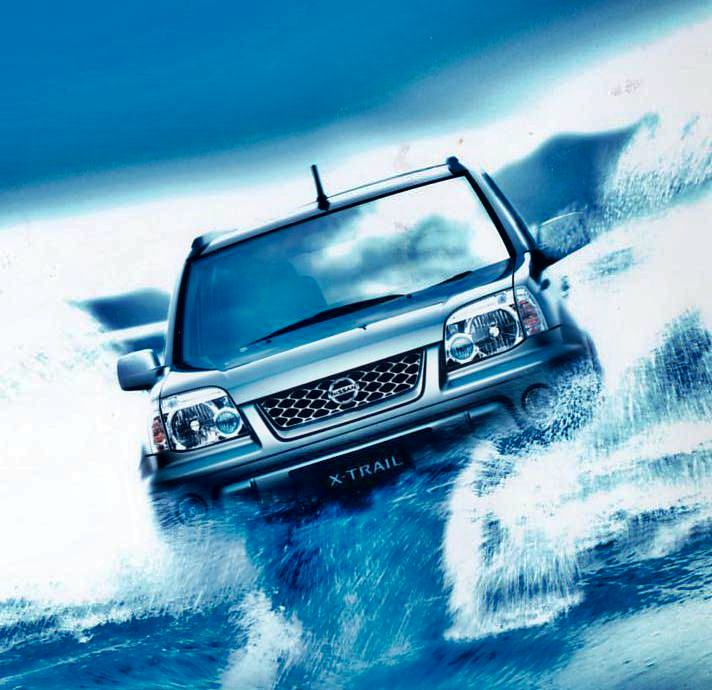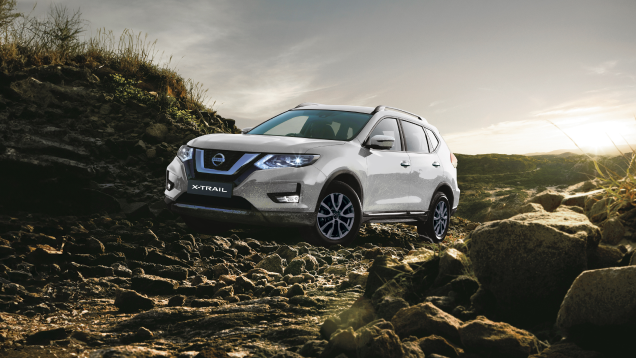This November will be the 25th anniversary of the Nissan X-Trail, which rode the wave of growing popularity for SUVs when it was launched in Japan in November 2000. Since the first generation was launched, the model has gone through 4 generations with over 8.1 million units sold worldwide.

First Alliance product
The X-Trail was the first product to be approved under the new management when Renault formed an alliance with the Japanese carmaker in 1999. At that time, the company was in major financial problems and its products needed to be more exciting and more appealing. The brief to the design team of the X-Trail was to think ‘out of the box’ and create a SUV which truly met the needs of buyers.
Like other new-generation SUVs from the late 1990s, the X-Trail was intended to be an alternative to the passenger car with a more lifestyle-oriented character. It was comfortable for daily use and also had the capability to go mildly off-road in the countryside or beach on weekends.
![Nissan X-Trail [2000 - 2007]](https://www.motaauto.com/wp-content/uploads/2025/10/Nissan-X-Trail-2000-2007-7.jpg)
Meaning of ‘X-Trail’
Its name described the SUV’s character. According to Nissan (when the model was first launched), the ‘X’ represented extreme sports, ‘evoking a spirit of adventure and the dynamic power of 4×4 vehicles’. ‘TRAIL’ referred to footprints, off-road paths and rugged terrain. Together, they embodied a dynamic 4WD concept that connected people with the great outdoors.
Advanced 4WD system
The first generation of the X-Trail (T30) was slightly more advanced than many other SUVs in its class at that time. Its ALL MODE 4×4 system was newly developed by Nissan and the X-Trail was the first to use it. Designed for front-wheel drive layouts, the system intelligently detected driving and road conditions to distribute optimal torque to the rear wheels for enhanced performance.
While some other 4×4 systems used manual response to initiate torque to the rear wheels, the X-Trail’s system used some electronic technology from Nissan’s ATTESSA system in the Skyline GT-R. Though the system [for the X-Trail] was not full-time 4WD, its computerized electronic control allowed it to respond faster than similar systems found in the Honda CR-V or Ford Escape, the two models it competed with at that time.
It achieved optimal fuel efficiency in normal driving by utilizing front-wheel drive and ensured stable performance on slippery roads through electronic control and powered rear wheels as well. Drivers could switch seamlessly between AUTO Mode, 2WD and LOCK mode (which provided a fixed torque distribution of 57:43).
![Nissan X-Trail [2000 - 2007]](https://www.motaauto.com/wp-content/uploads/2025/10/Nissan-X-Trail-2000-2007-6.jpg)
Significant new model
The first generation was assembled in Malaysia and Edaran Tan Chong Motor (ETCM) offered it with the new QR-series engine in 2 litre and 2.5 litre sizes. They were priced from RM129,900 (inclusive of insurance) and RM148,800, respectively.
It was a significant new model for the brand, one of the new generation of SUVs with a more passenger car feel. Even the construction was monocoque, like a passenger car and different from traditional SUVs which had a body on a ladder chassis frame.
![Nissan X-Trail [2000 - 2007]](https://www.motaauto.com/wp-content/uploads/2025/10/Nissan-X-Trail-2000-2007-4.jpg)
![Nissan X-Trail [2000 - 2007]](https://www.motaauto.com/wp-content/uploads/2025/10/Nissan-X-Trail-2000-2007-8.jpg)
The X-Trail’s interior was spacious and clearly designed for those with active lives enjoying outdoor activities. The chief engineer and his team carried out a lot of market studies to understand what such customers wanted. From talking to those who did winter sports, he learnt that they usually need to change their snow-shoes. To make it easier for them to do so in the car, he introduced a pop-up steering wheel featuring a maximum tilt angle of 45 degrees. This innovation greatly expanded the usable space in the driver’s area, making it easier for drivers to change shoes while seated.
![Nissan X-Trail [2000 - 2007]](https://www.motaauto.com/wp-content/uploads/2025/10/Nissan-X-Trail-2000-2007-5.jpg)
The X-Trail in Malaysia also came with a ‘Hyper Roof Rail’, an integrated roof rail that which retained the conventional roof rail functionality but also featured driving lights mounted on the rails’ front ends. The lights, positioned higher up, also cast a broader light than high beams.
![Nissan X-Trail [2000 - 2007]](https://www.motaauto.com/wp-content/uploads/2025/10/Nissan-X-Trail-2000-2007-9.jpg)
When ASEAN markets were left alone
Back in the early 2000s, Nissan was still being turned around from its financial problems by Carlos Ghosn, and his focus was on North America where he knew he could get stronger revenues if he refreshed the model range. So while the US market got new models, product renewal in the ASEAN markets was slow.
![Nissan X-Trail [2000 - 2007]](https://www.motaauto.com/wp-content/uploads/2025/10/Nissan-X-Trail-2000-2007-2.jpg)
ETCM therefore had to soldier on with the X-Trail in its first generation for quite a number of years. Periodically, it would come out with minor updates or special editions with NISMO accessories. It was only in 2007 when Nissan finally came out with the next generation of the X-Trail. By that time, the SUV market had grown further but the Nissan model had built up a strong following because of its practical concept.

The latest X-Trail is available in Malaysia priced from RM138,888. Click here to know more about it and where to test-drive one.

![Nissan X-Trail [2000 - 2007]](https://www.motaauto.com/wp-content/uploads/2025/10/Nissan-X-Trail-2000-2007-3-696x522.jpg)

